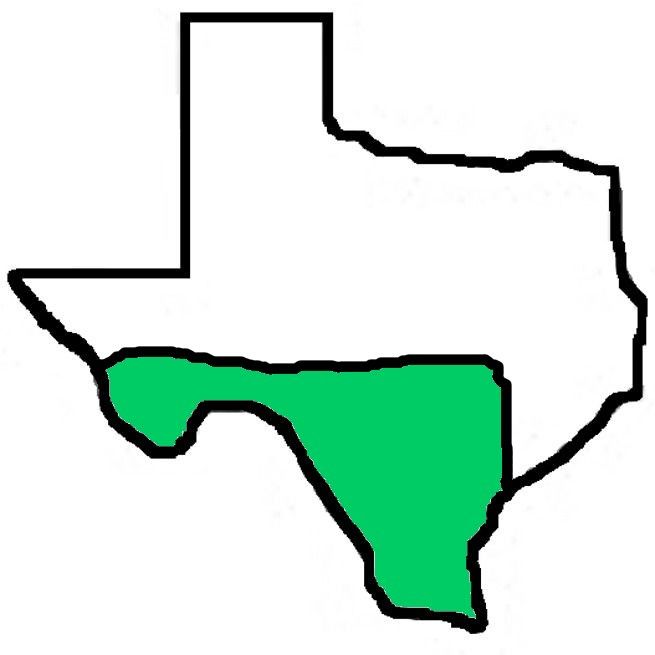Moths of the Lower Rio Grande Valley
Less Common, but Regular Moths
Geometers & Uranids

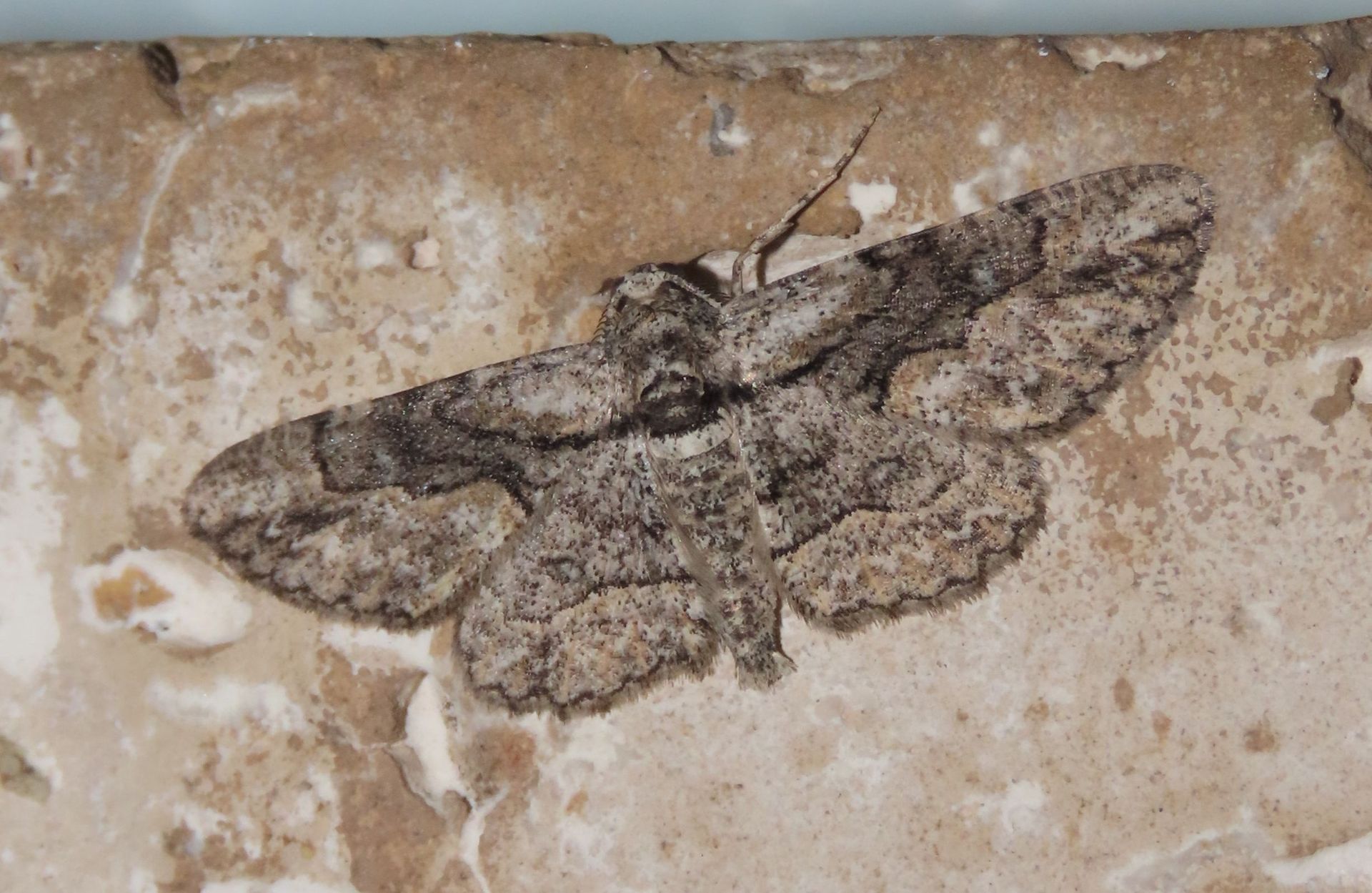
Common Gray (Anavitrinella pampinaria) - left
Dataria Gray (Iridopsis dataria) - right
At first glance, these two grays look indistinguishable: both show the dark AM line crossing the thorax, with a white band below the dark thorax band; and both show the median and PM lines strongly separated at the costa and then converging at the inner margin (the median lines are hard to see on both these bugs). The best clue is the presence of the "bean" on the hindwing of the Dataria, a characteristic of most Iridopsis grays. Another consistent field mark for the Dataria is the contrasting dark "W" near the forewing tip. Common recorded March - October, with records in May; Dataria recorded March - April and June - October.

Common Gray
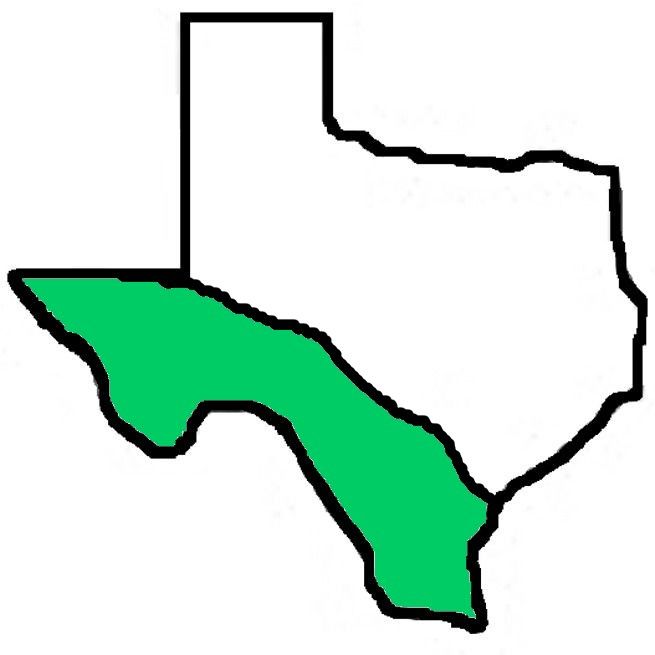
Dataria Gray
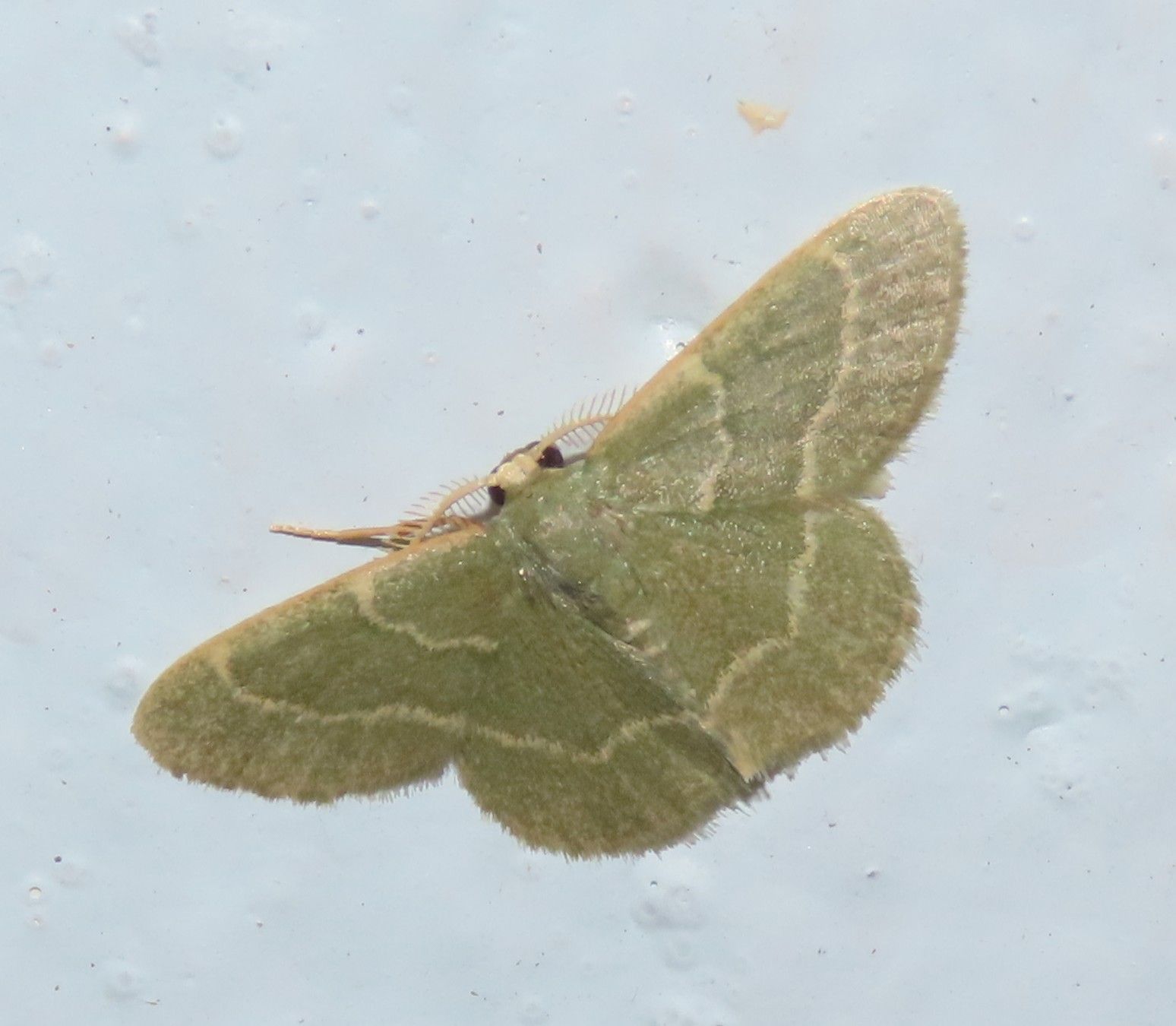
Thin-lined Emerald (Chlorochlamys phyllinaria)
Similar to the Blackberry Looper, this moth's AM and PM lines are wavy, not straight. Look also for pale bands on the abdomen of the Thin-lined, as opposed to the dorsal streak on the Blackberry. Recorded March to November.


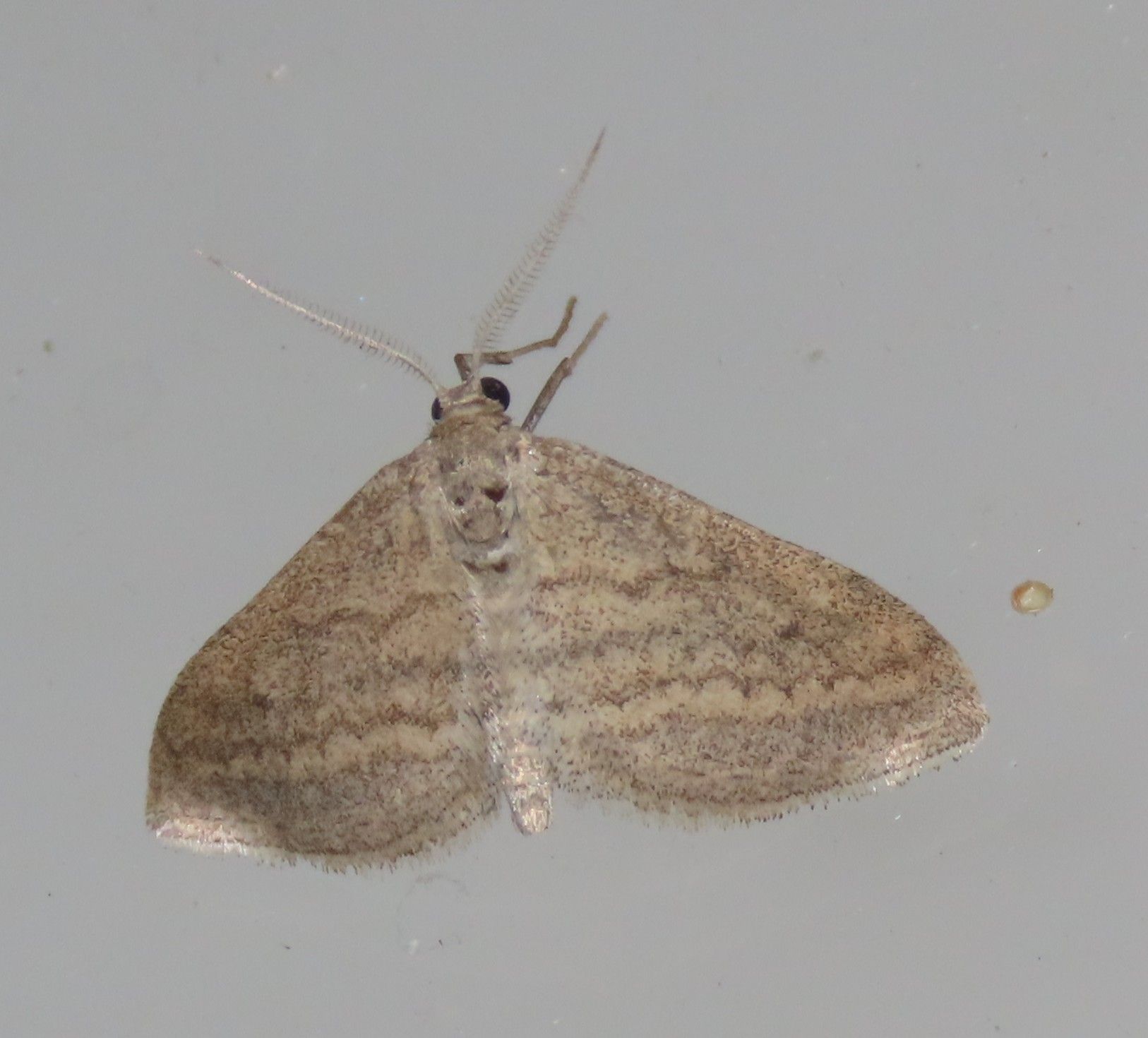

Straight-lined Wave (Lobocleta plemyraria)
The somewhat pointed wingtips give this small peppery moth a rather triangular shape at rest. Three wavy but rather straight brown lines run across the wings, and usually two discal spots are visible. Even on worn individuals (right), the lighter ST line bordered in dark brown is visible. Recorded year-round.
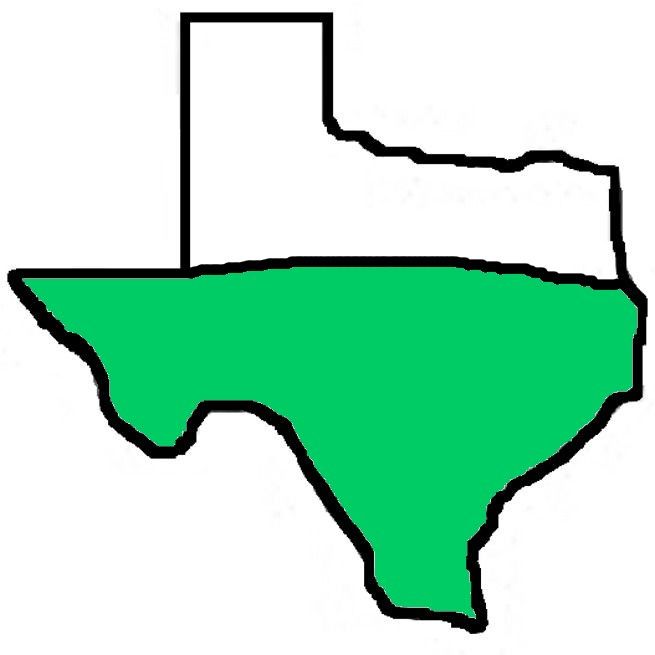
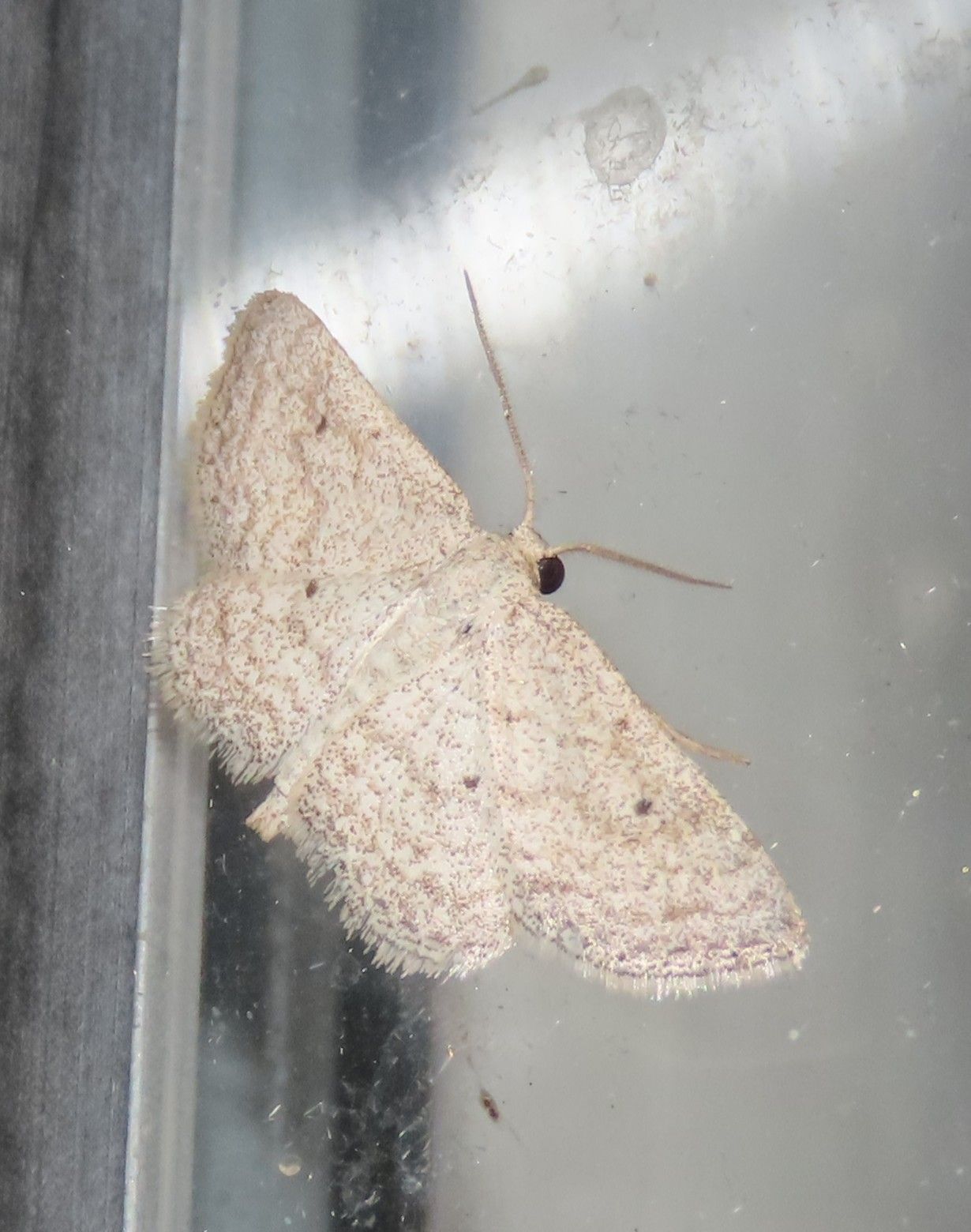
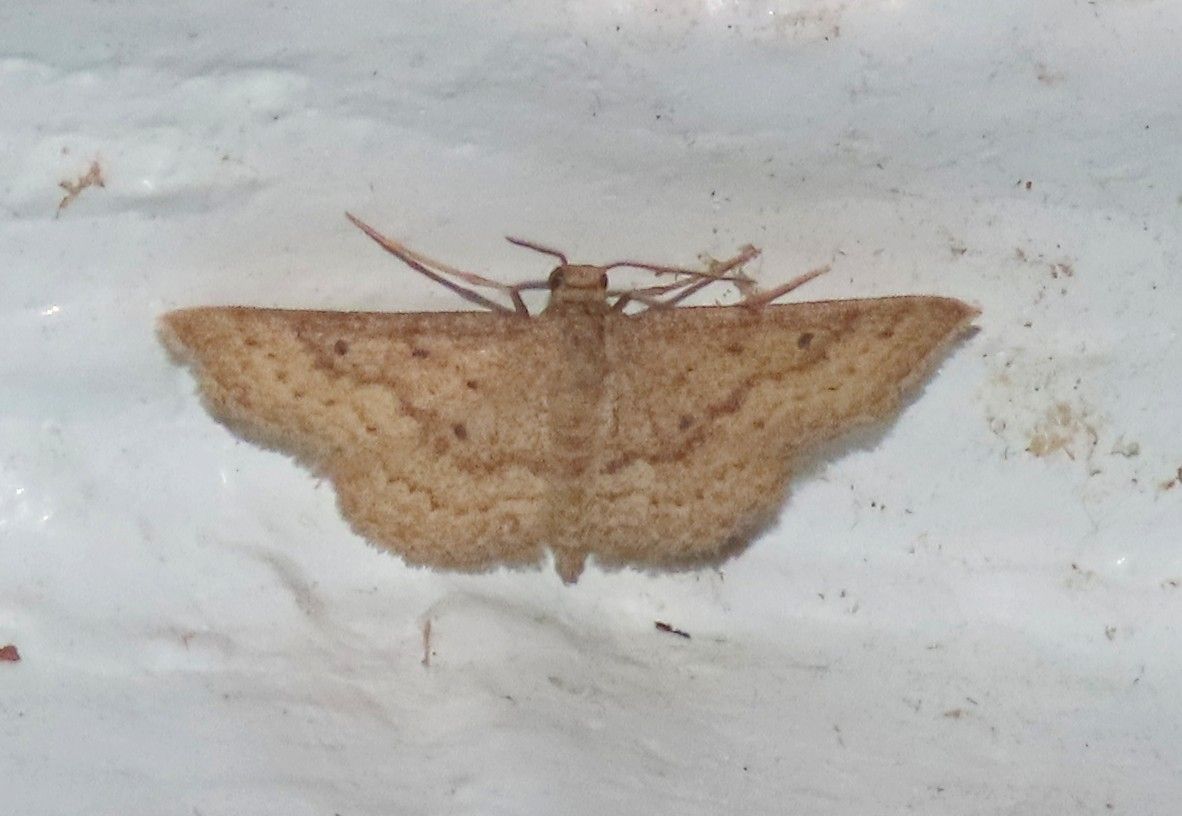
Drab Brown Wave (Lobocleta ossularia)
This well-named moth can best be told from similar peppery, brown-lined moths by the fact that both discal spots sit above the median line, whereas on many waves the hindwing discal spot sits below the median line. Recorded October - January, with records in March and May.
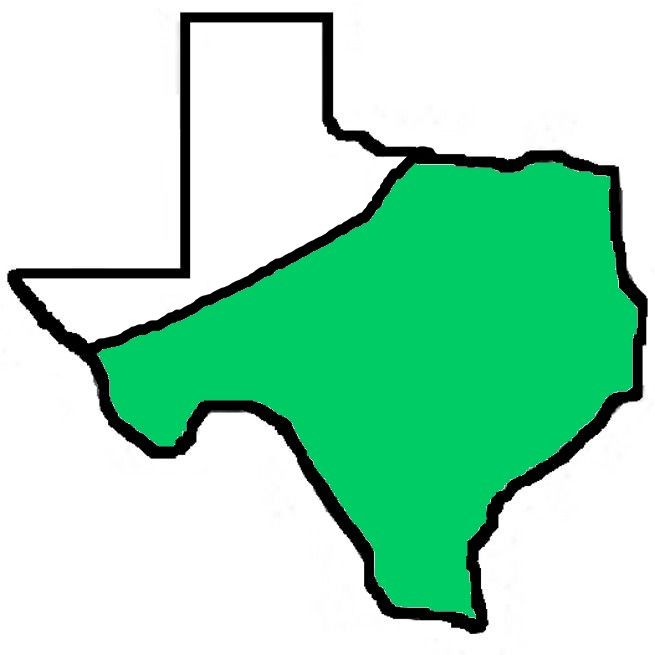
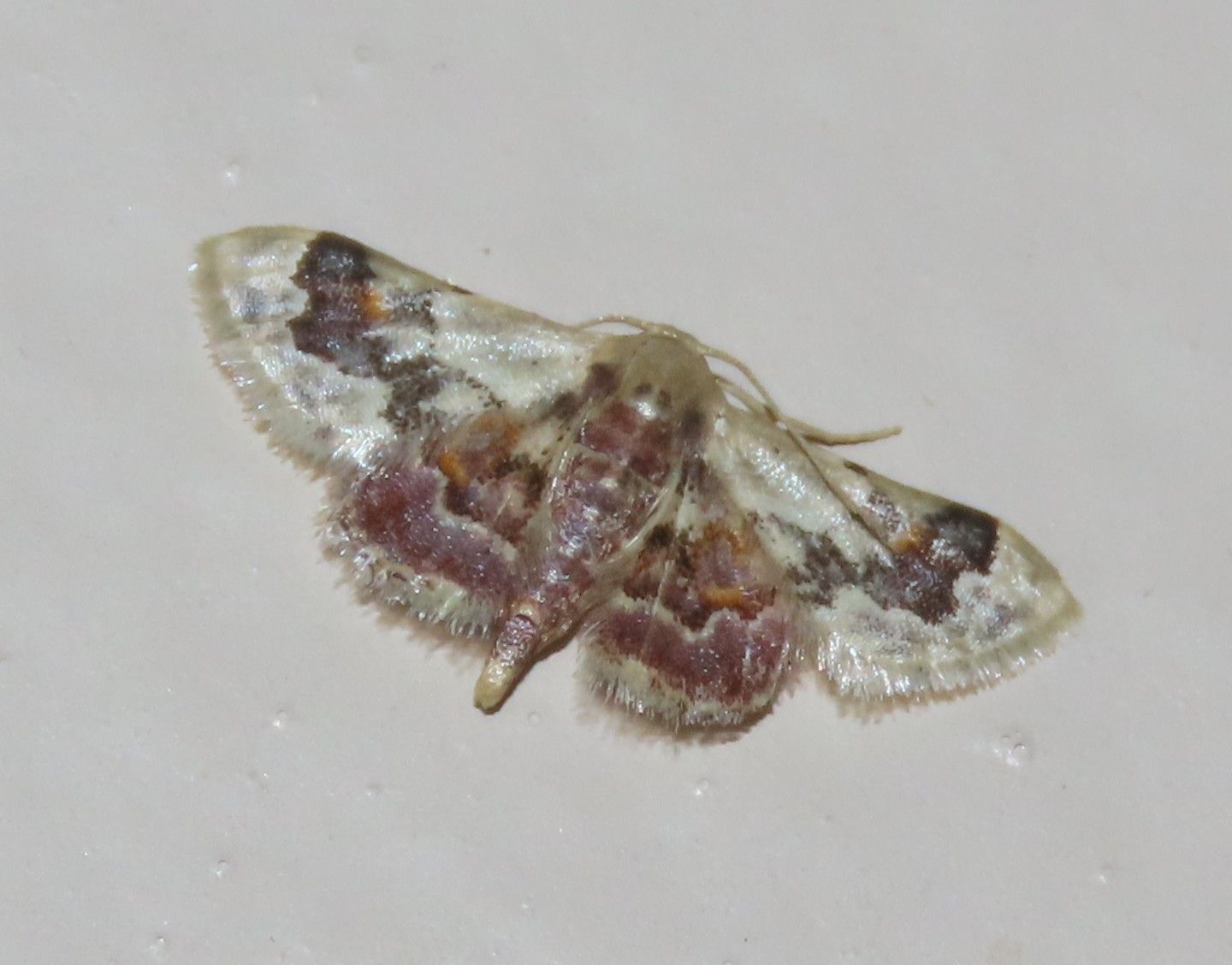
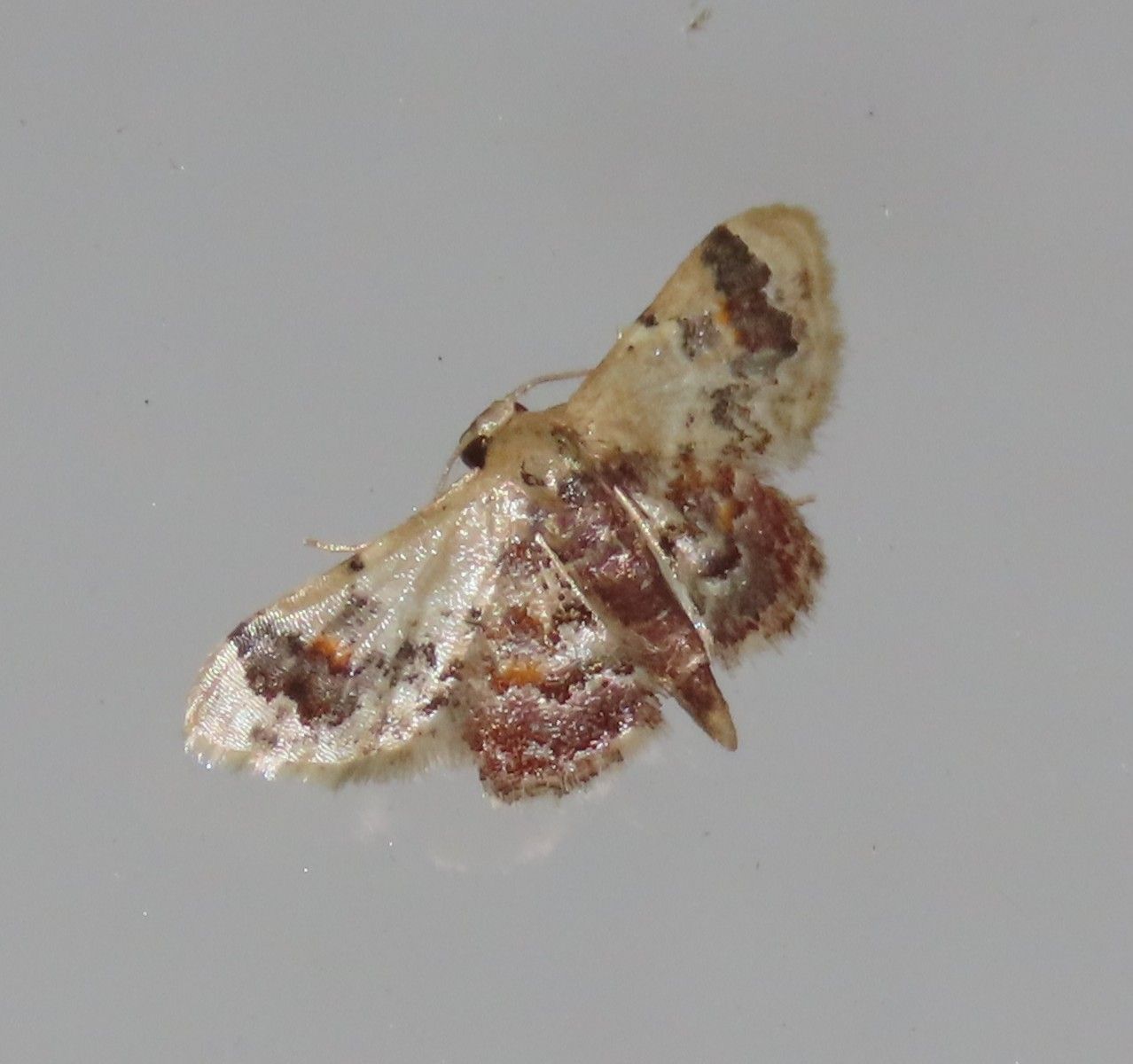
Beautiful Wave (Idaea asceta)
Another well-named moth, this tiny jewel has cream-colored forewings and blackish or maroon-colored abdomen and hindwings. The forewings are adorned with a dark patch. A South Texas and Southeast Arizona specialty. Recorded July - September, with records in February.
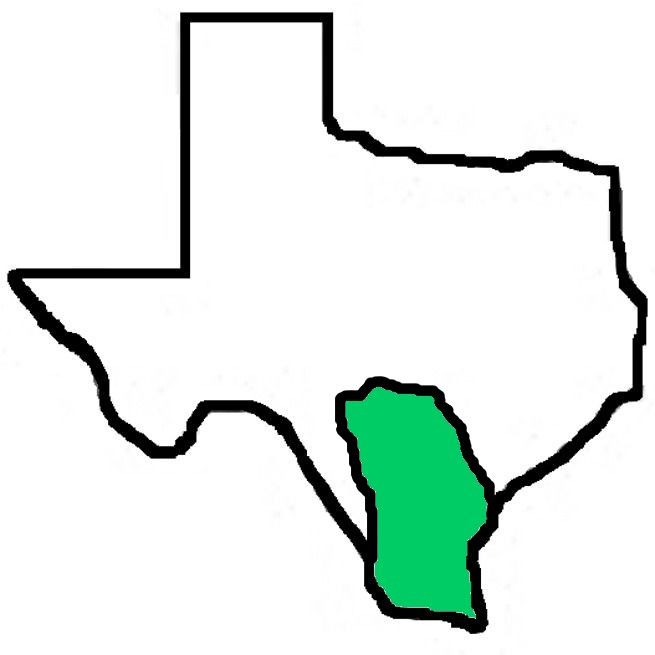
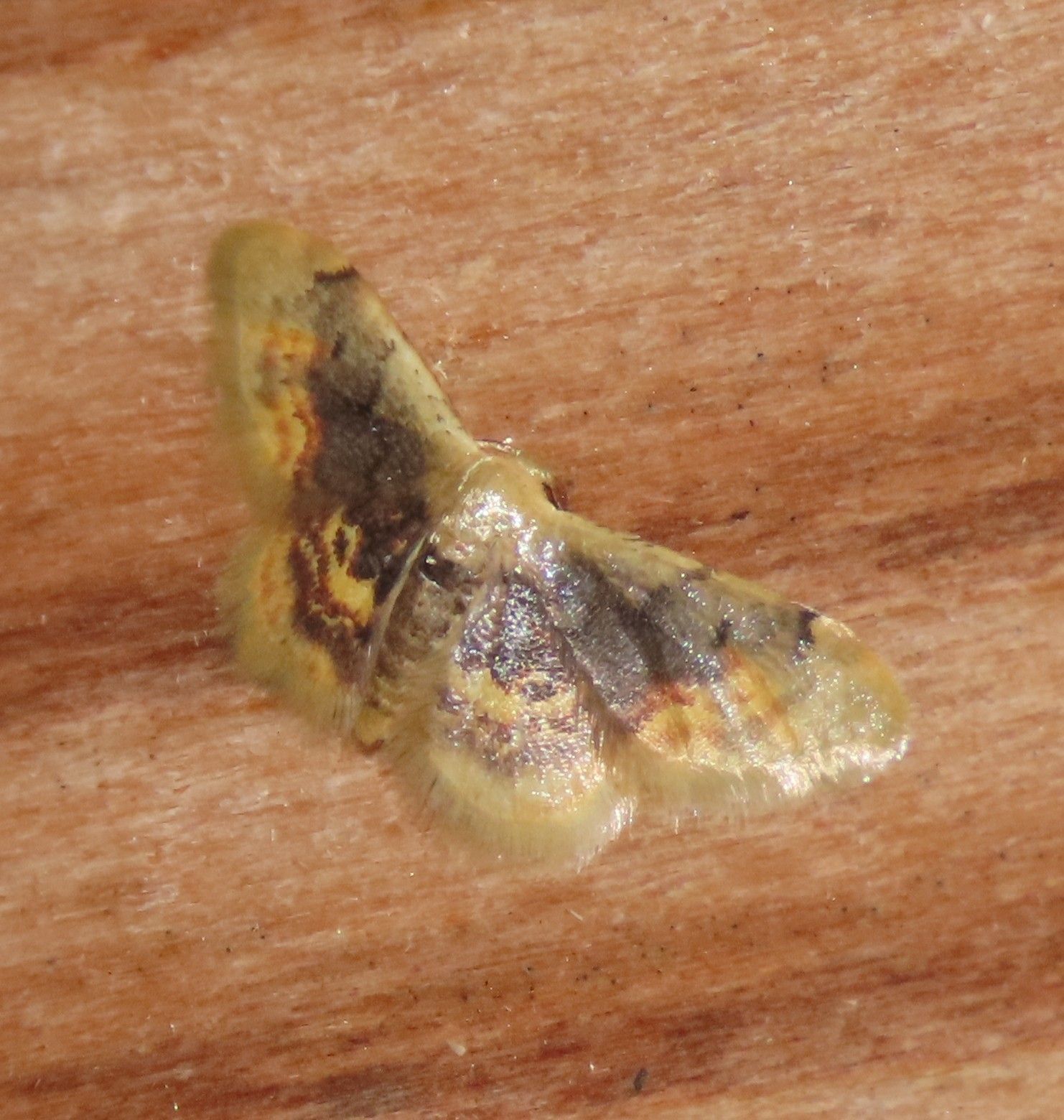
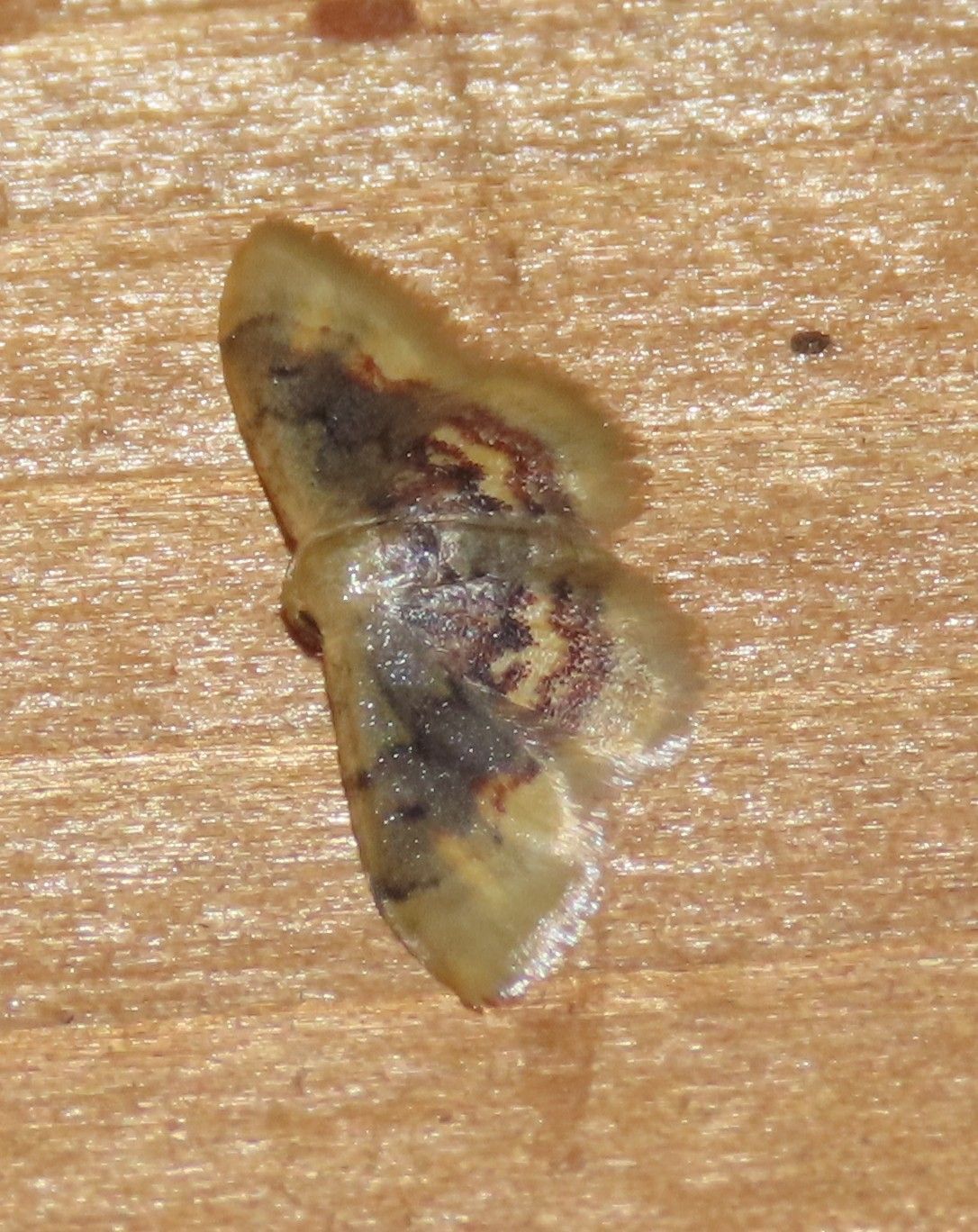
Diminutive Wave (Idaea scintillularia)
So tiny as to be easily overlooked, this little jewel appears basically dark with a broad yellow ST area. The hindwings are maroon with a yellow patch in the middle, and when the wings are fully spread, a dark spot within the patch is visible. Recorded March - July and September - October.
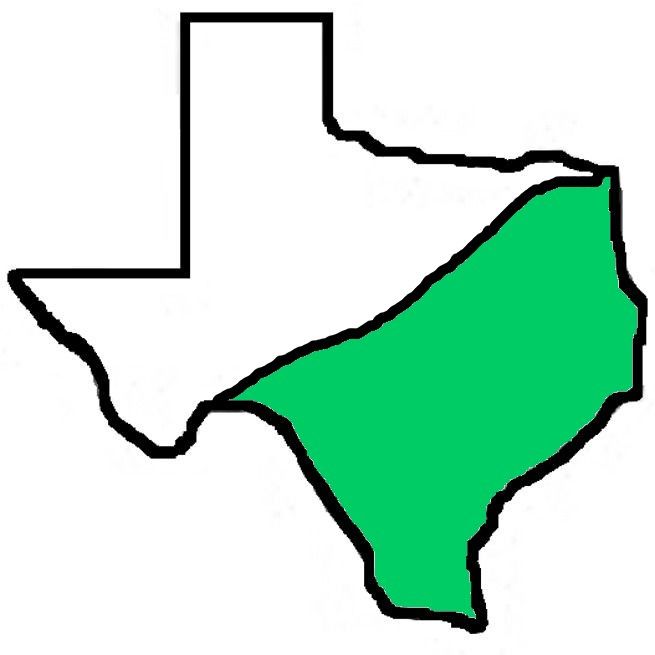

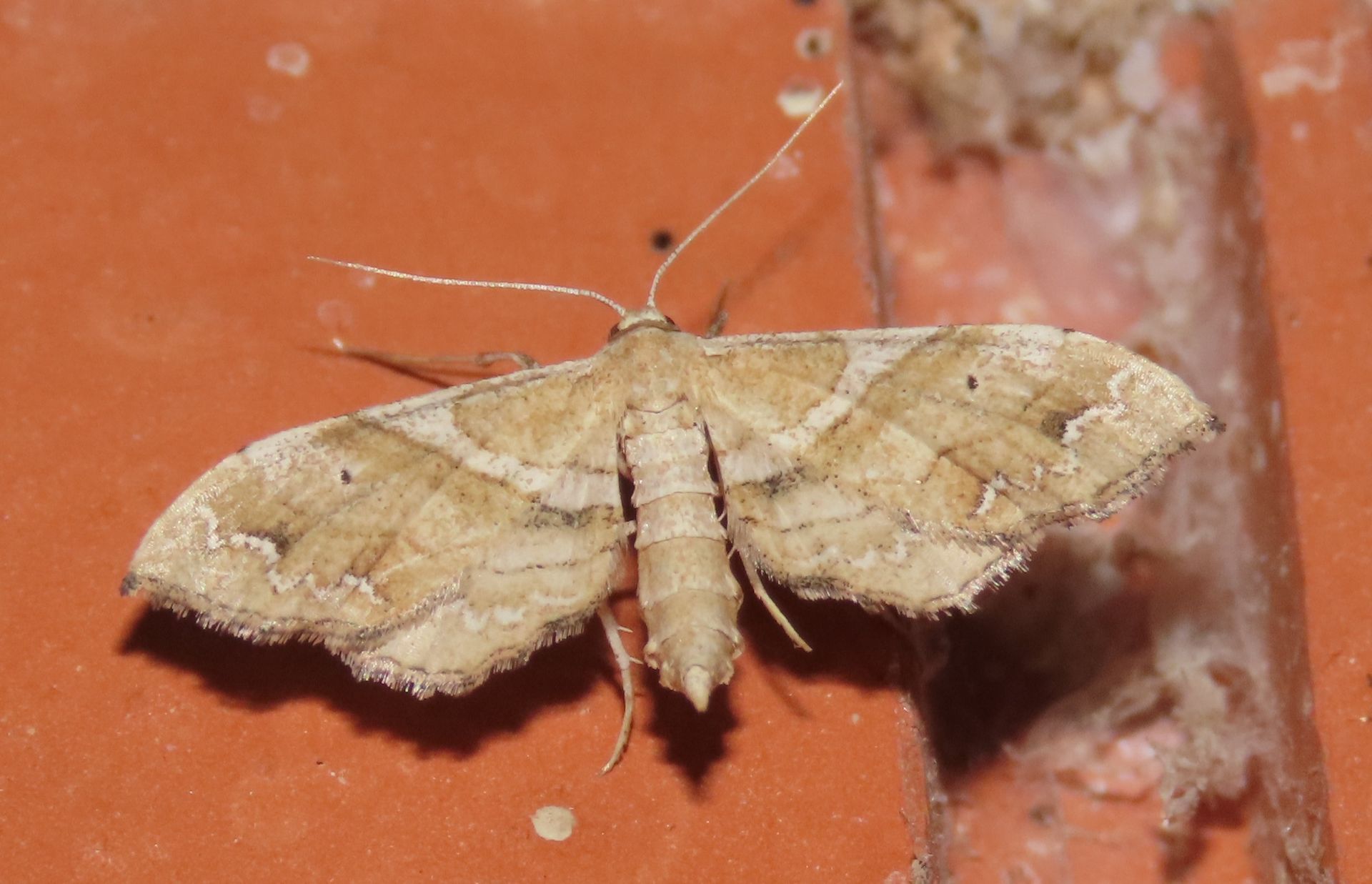
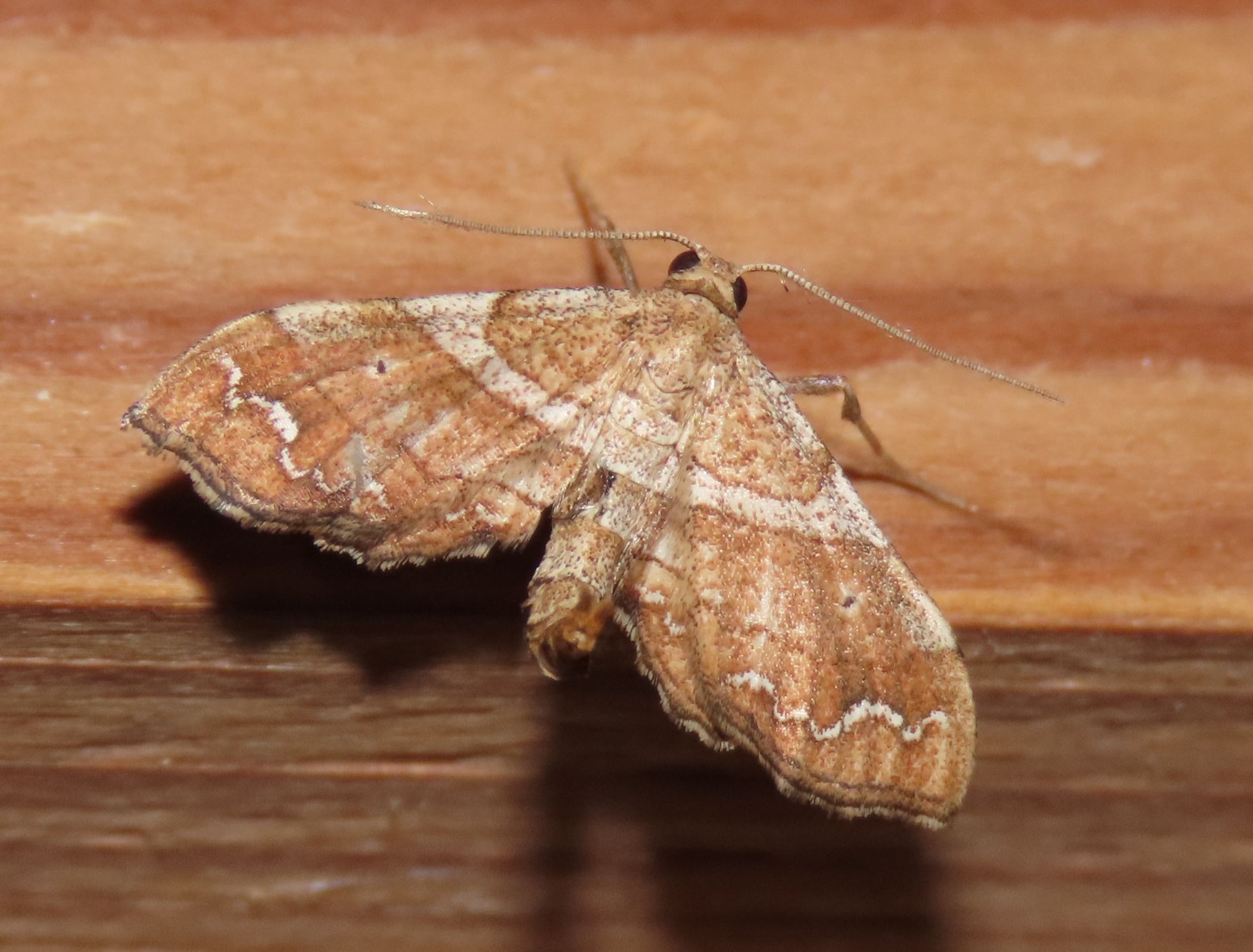
Orbed Wave (Odontoptila obrimo)
Variable in color, but the scalloped shape, creased look to the wings, wide white AM band, and wavy white ST line are consistent field marks. Recorded February - December.
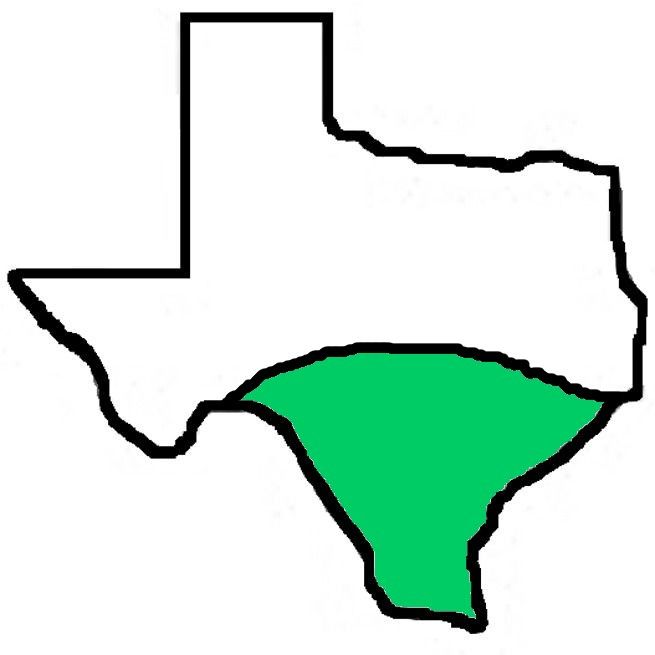
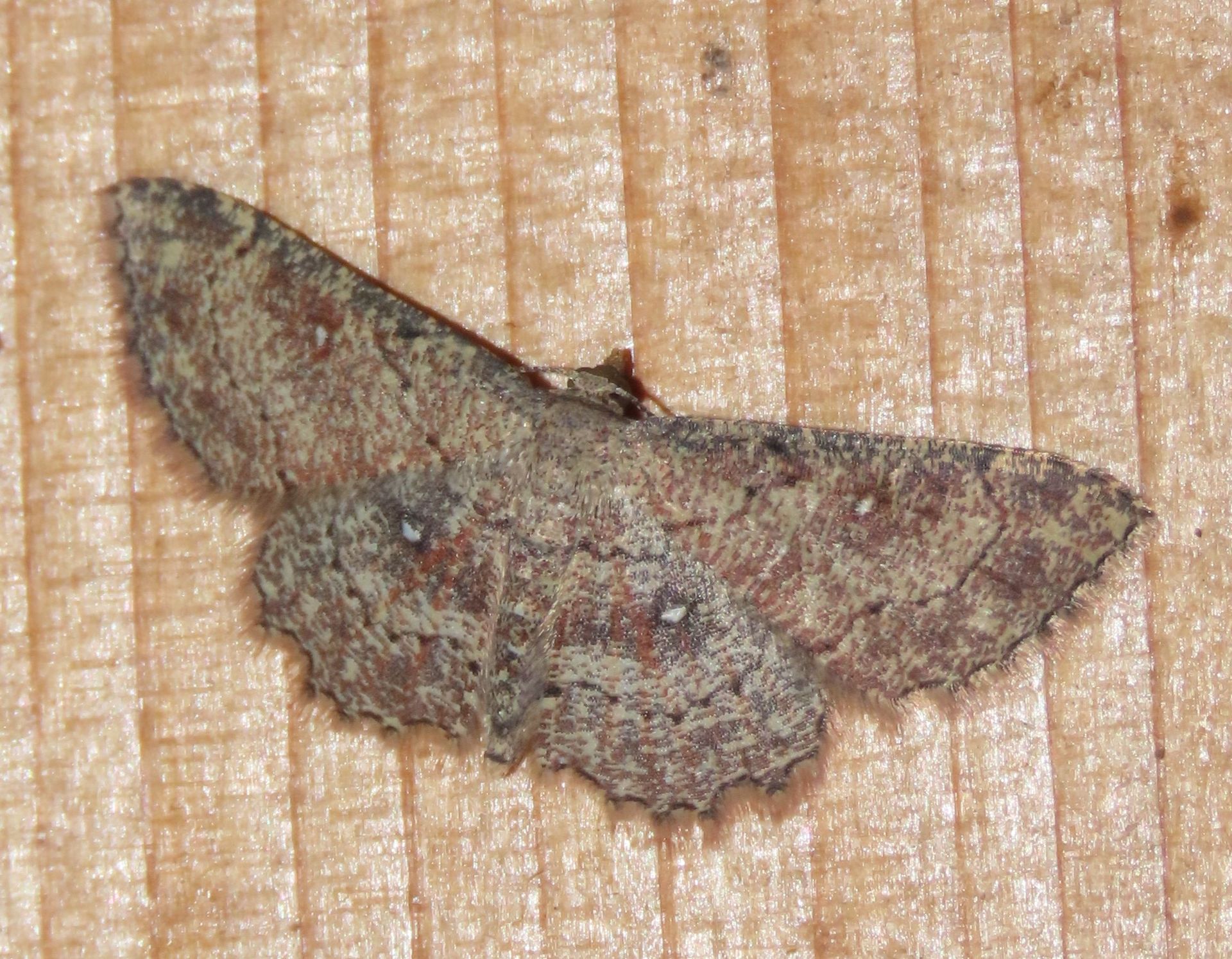
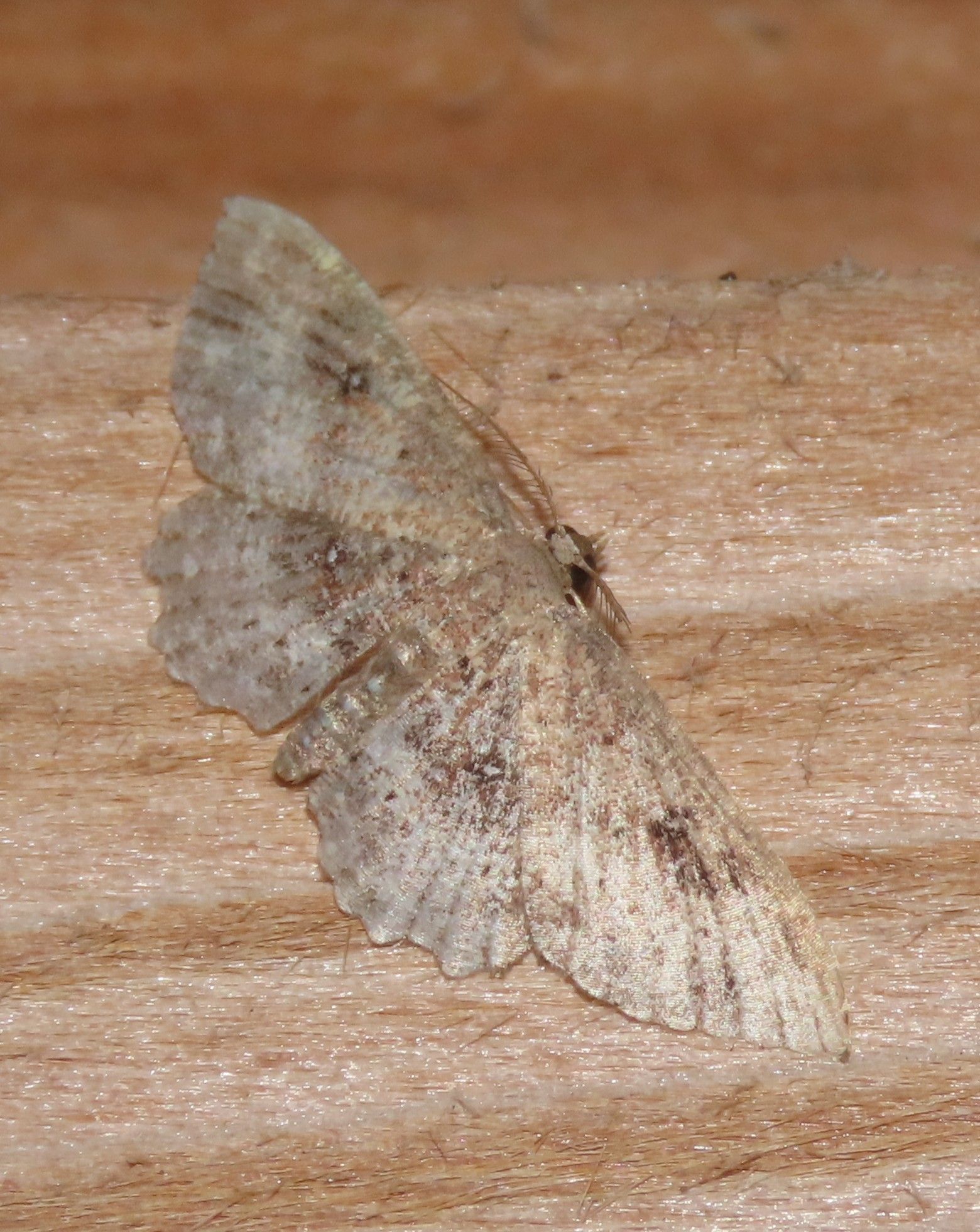
Dwarf Tawny Wave (Cyclophora nanaria)
This heavily brindled moth is easily identified by the white discal spots outlined in black. This field mark shows well even on worn individuals (right). Recorded February - June, with records in August.

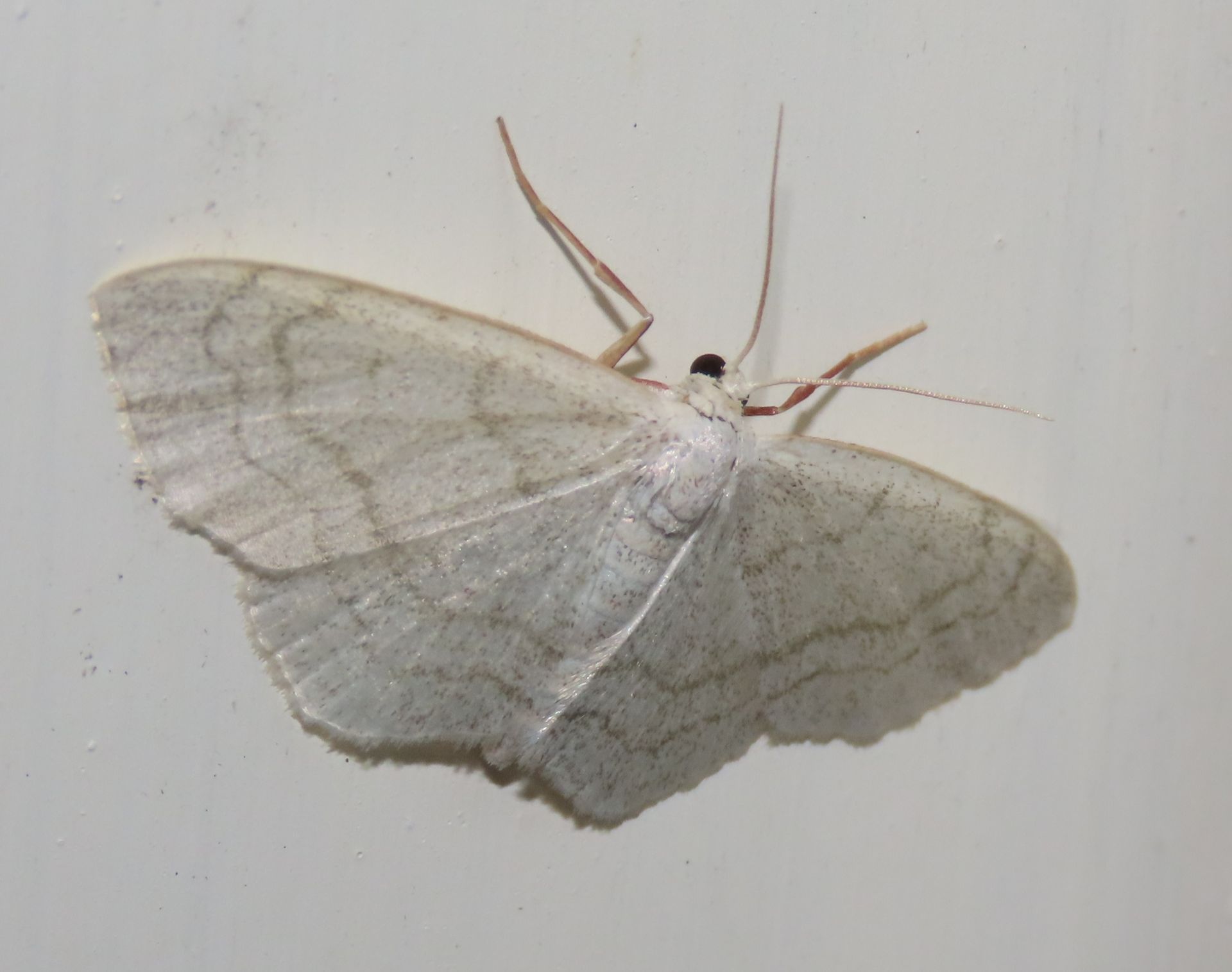
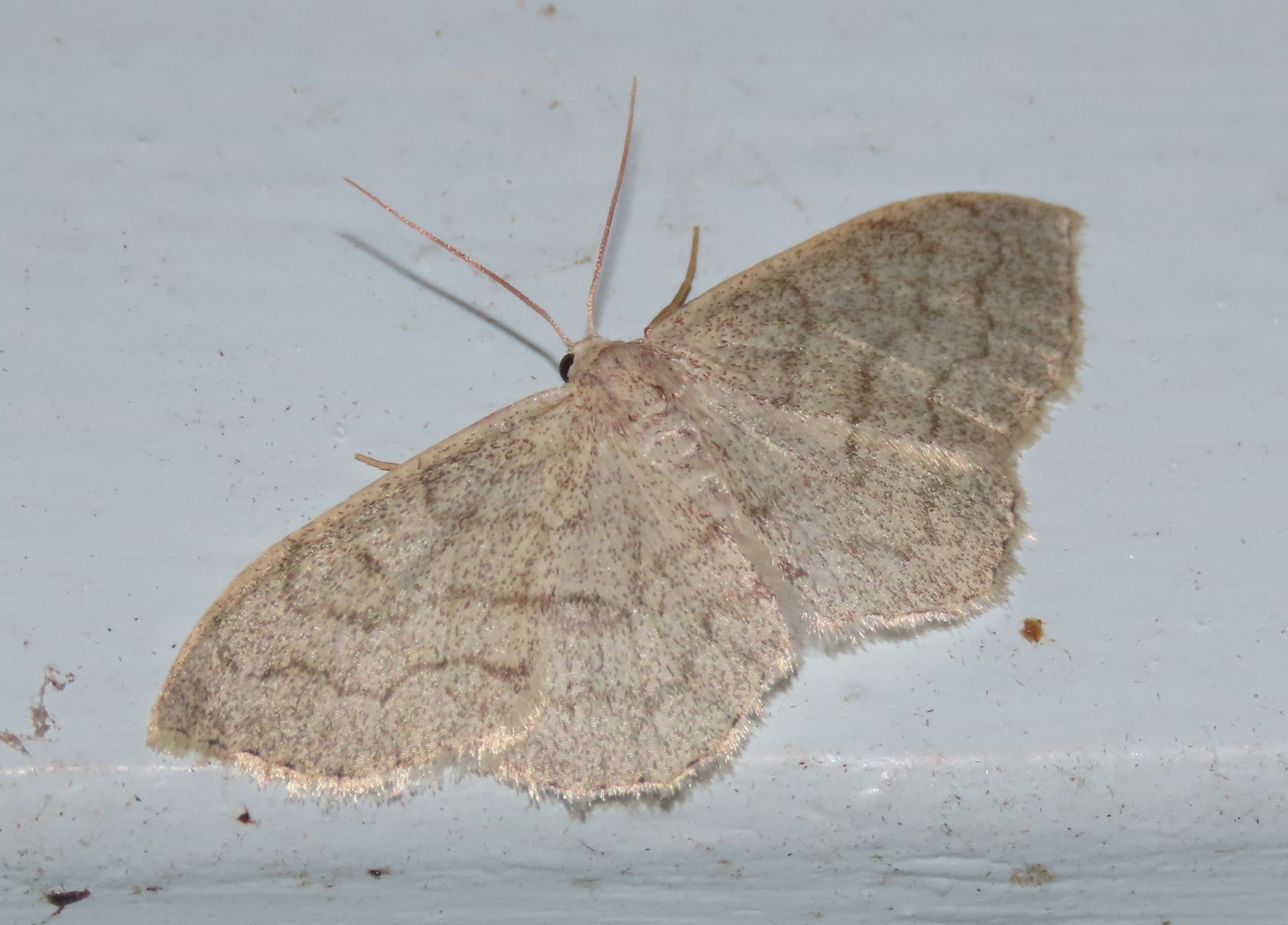
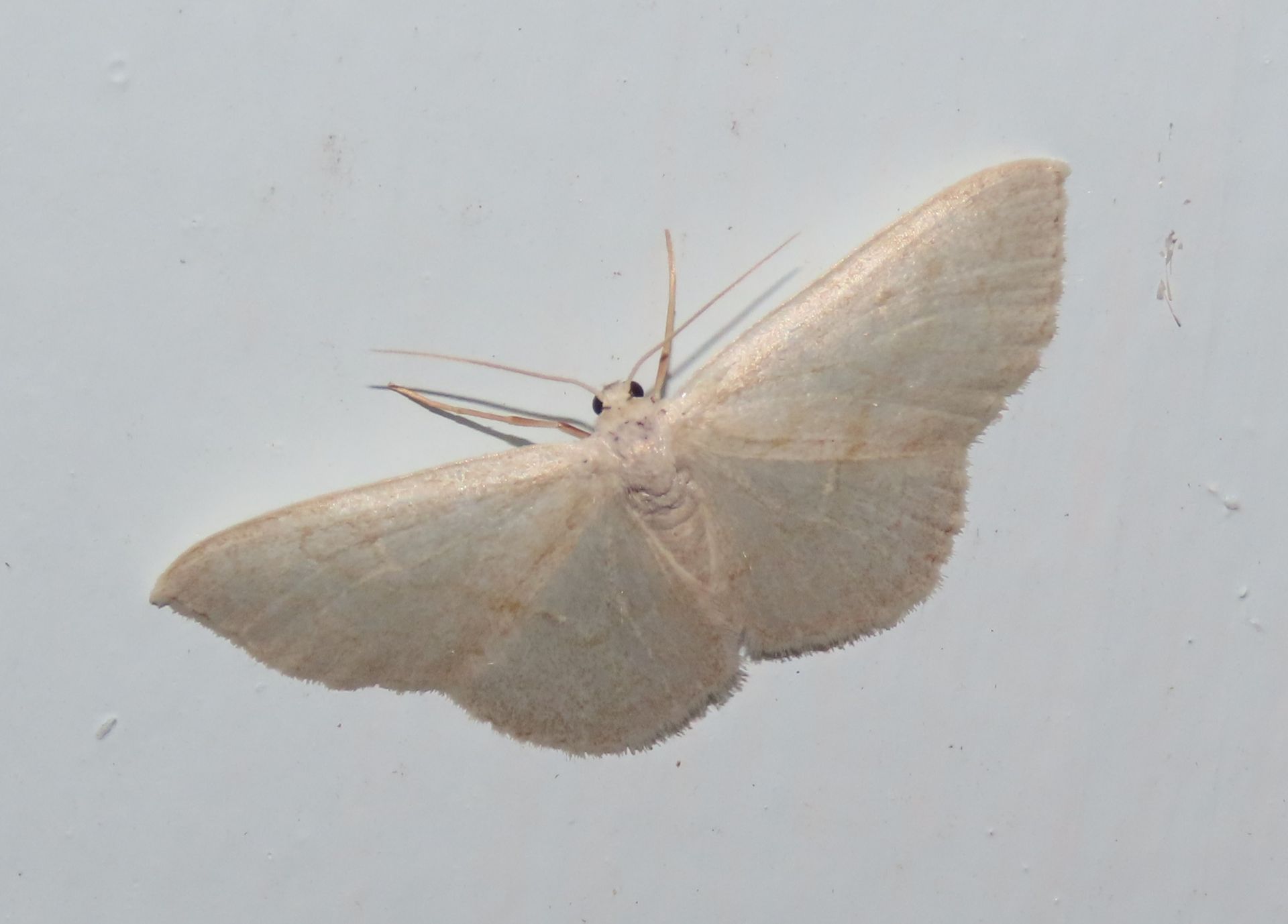
Suave Wave (Acratodes suavata)
This pale moth has three bands across the wings that range from contrasting (middle) to barely visible (right). A good field mark is the elongated discal spot in the forewing. A South Texas specialty, also found in south Florida. Recorded November - March.
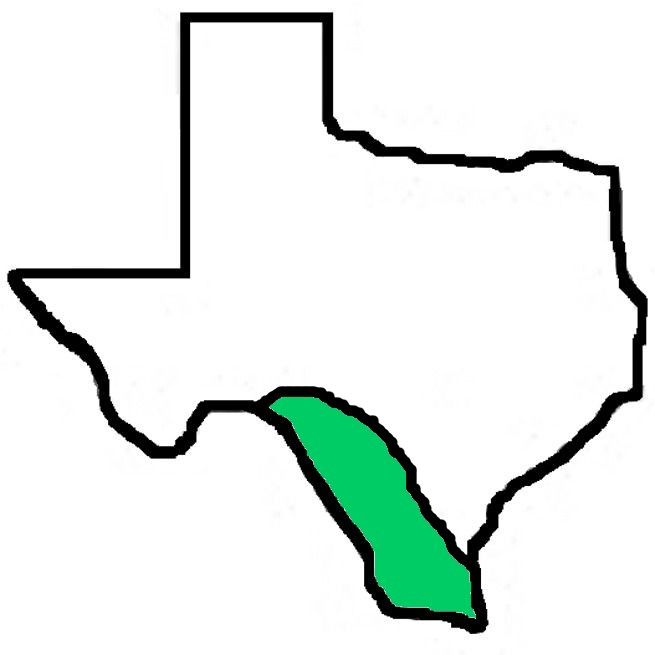
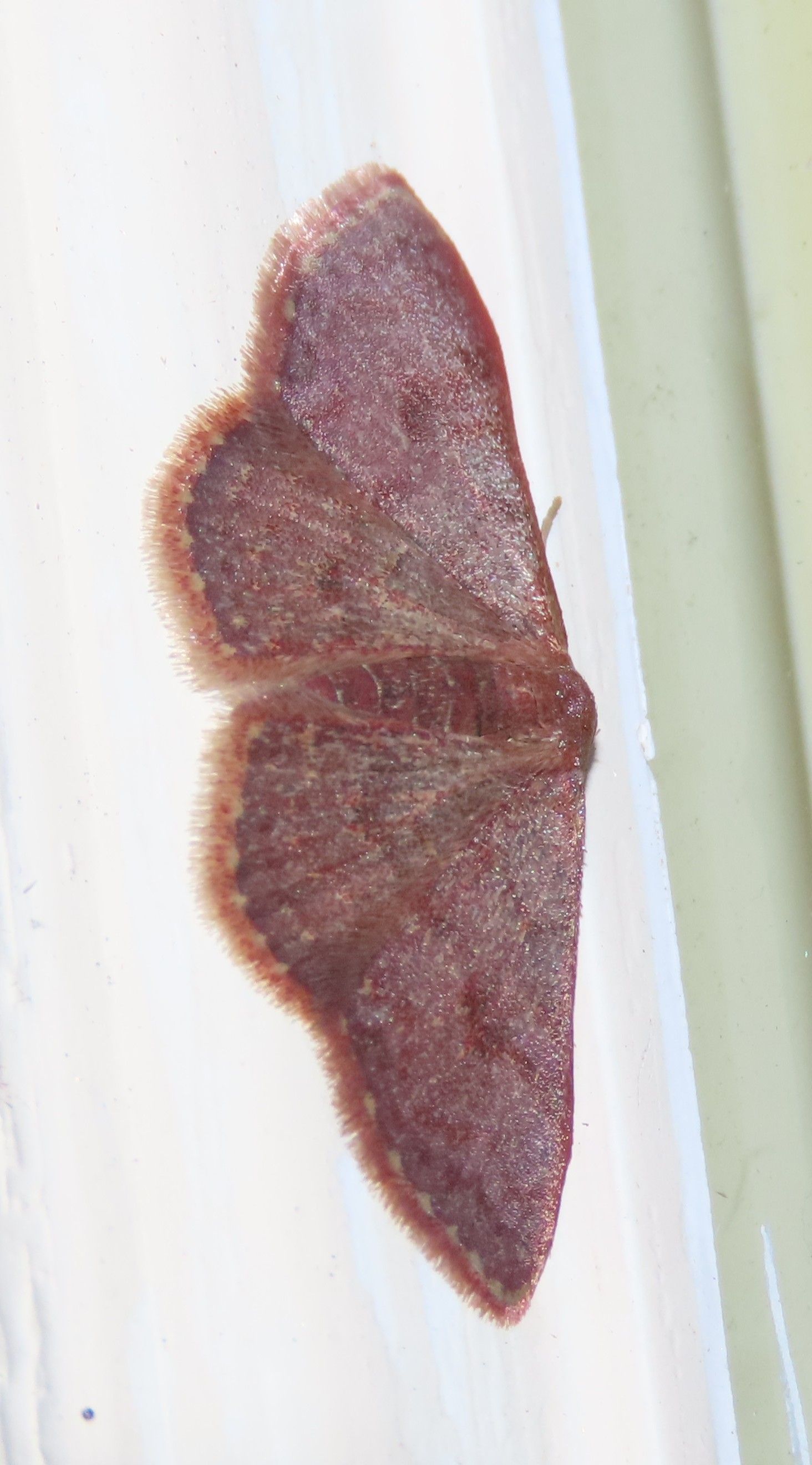
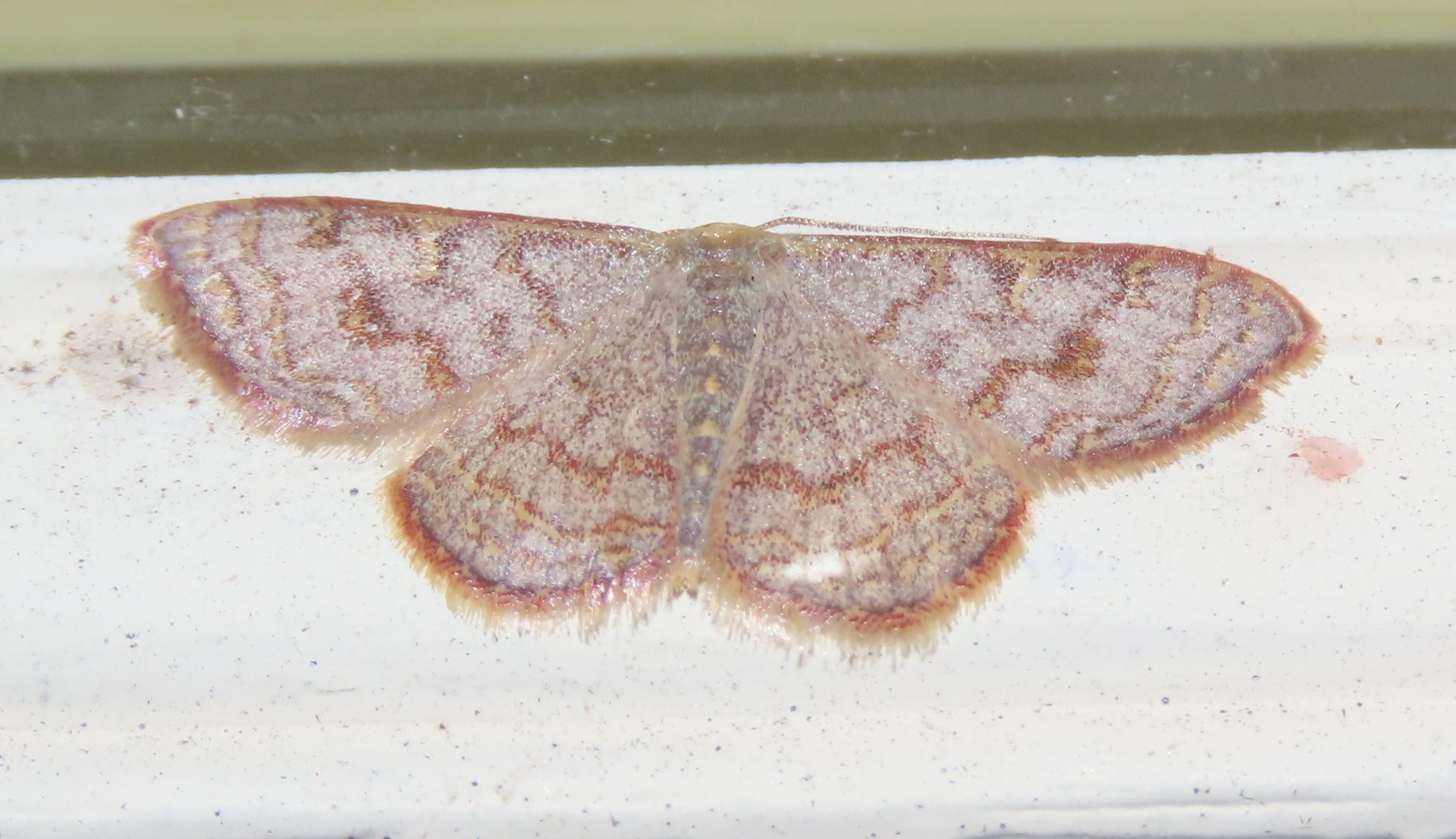

Pannaria Wave (Leptostales pannaria)
This moth always has some kind of reddish cast to it, ranging from entirely rusty (left) to pale with a complete rusty outline, in addition to the rusty bands (right). Recorded December - March, with records in June.
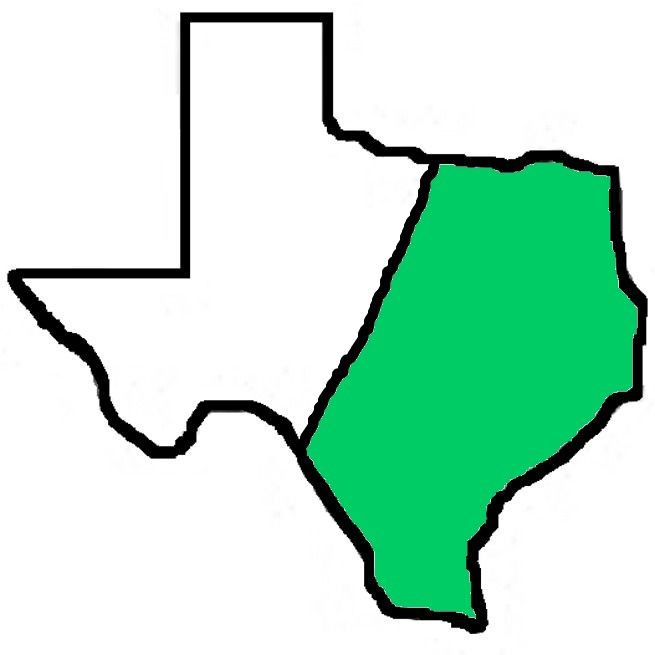
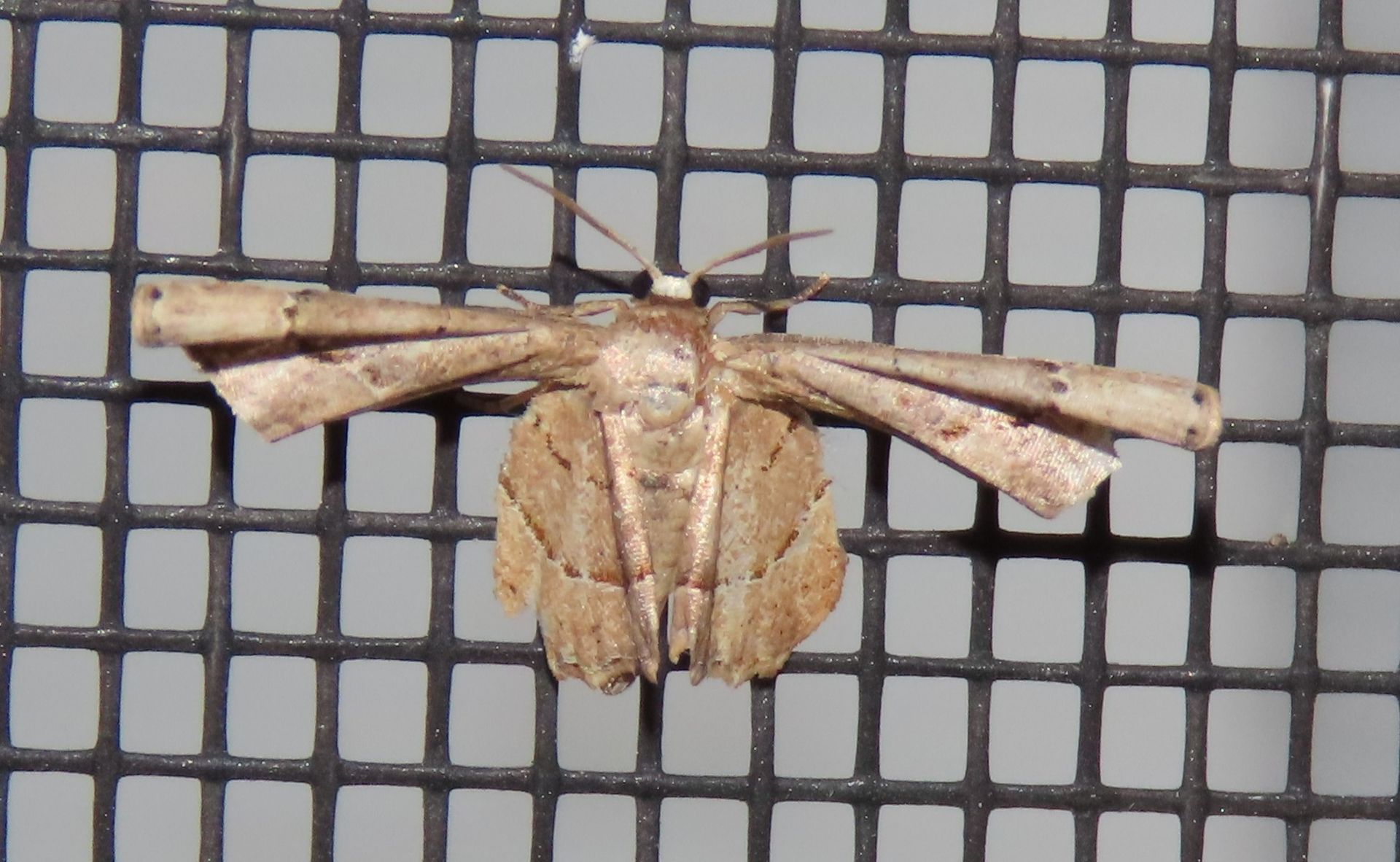


Triangular Scoopwing (Antiplecta triangularis)
Scoopwings (tiny members of the Uranid family) are easily recognized by their habit of tightly folding their forewings and creasing their hindwings, but sometimes will sit like a "normal" moth (center). The Triangular Scoopwing is brown overall and has a wide median band that is usually darker than the rest of the wing, but this band is always bordered (both above and below) by a dashed dark brown-and-white line. Recorded October to November, with records in June. Moth Photographer's Group shows records in the Trans-Pecos and Hill Country, but all BugGuide records are from the LRGV, so it can probably be considered a specialty!
